Fertility
Resources
Style
Planning
View All
Like many of my clients and readers, I was given hormonal birth control with absolutely no discussion on the side effects of the pill. I was handed the pill and never really thought twice about it. I just knew it gave me a “regular” period and would help me protect against an unwanted pregnancy. It was only in my THIRTIES that I discovered how the pill depletes certain nutrients, affects mood, weight, and so much more. If you’re curious about which nutrients are depleted on hormonal birth control, then keep reading on.
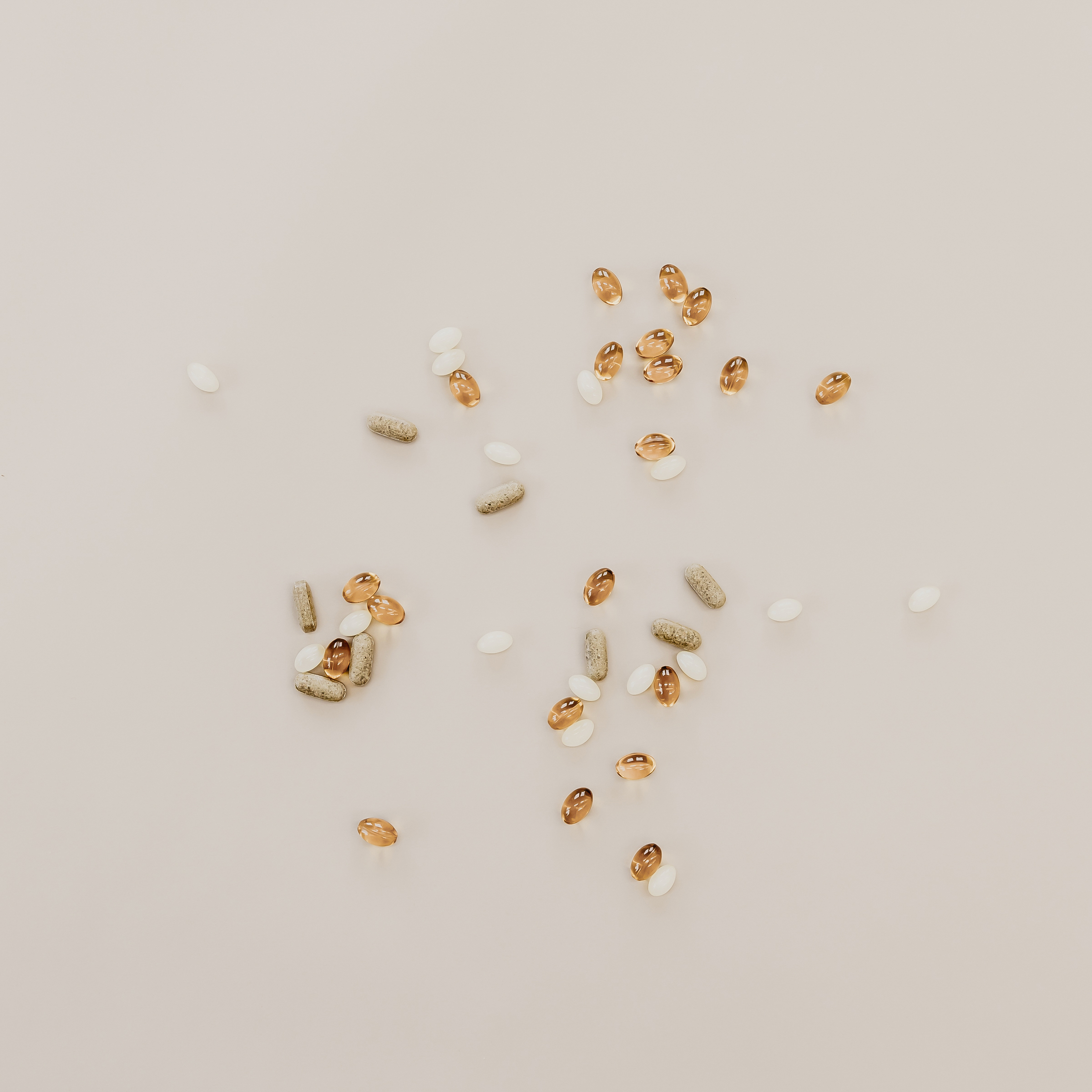
8 Nutrients depleted on hormonal birth control and how they impact fertility:
Zinc
Found in foods such as eggs, seafood, meat, nuts, seeds, beans and whole grains. Zinc plays an important role in both egg and sperm health.
Magnesium
Found in foods such as avocado, banana, seafood, green leafy vegetables, nuts and seeds. Magnesium plays an important role in sleep, bone health and our muscles ability to relax.
Vitamin C
Found in foods such as oranges, broccoli, kiwi fruit and guava. Vitamin C is a valuable antioxidant that keeps our eggs and sperm protected from oxidative stress caused by free radicals.
Folate
Found in green leafy vegetables and fortified breads and cereals. Folate is essential when trying to conceive and helps to prevent the formation of neural tube defects in early pregnancy.
Selenium
Found in foods such as Brazil nuts, meats and seafood. Selenium plays a valuable role in our thyroid function and helps to prevent sperm from mutating or becoming damaged.
Vitamin B2
Found in eggs, meats and dairy products. Vitamin B2 is a common nutrient depleted when on the pill and is often the culprit behind those pesky headaches!
Vitamin B6
Found in foods like breads and cereals. Vitamin B6 is commonly depleted in those taking the pill. It plays an important role in fertility and the luteal phase of the menstrual cycle.
Vitamin B12
Found in foods such as fish, beef, and fortified cereals. B12 is essential for healthy cell formation, a must when trying to conceive.
Ideally you would want to ensure that these levels are checked and corrected where necessary before you start thinking about conceiving to ensure a healthy baby and pregnancy. You can start a prenatal, a few months before coming off the pill to help with the transition of coming off.
Wondering what else you can do to support your body when coming off the pill?
Let’s face it, coming off the pill can be a scary thought and can lead to some not so nice side-effects including:
- Post-pill amenorrhea
- Painful, heavy periods
- Irregular cycles that are hard to predict
- Acne
- Headaches or migraines
- Changes in weight (loss or gain)
- Changes to mood
- Digestive upset (IBS like symptoms)
- Breast tenderness
Supporting your body through nutrition can be a great way to make the transition easier.
Try these 9 tips to support your body when coming off the pill
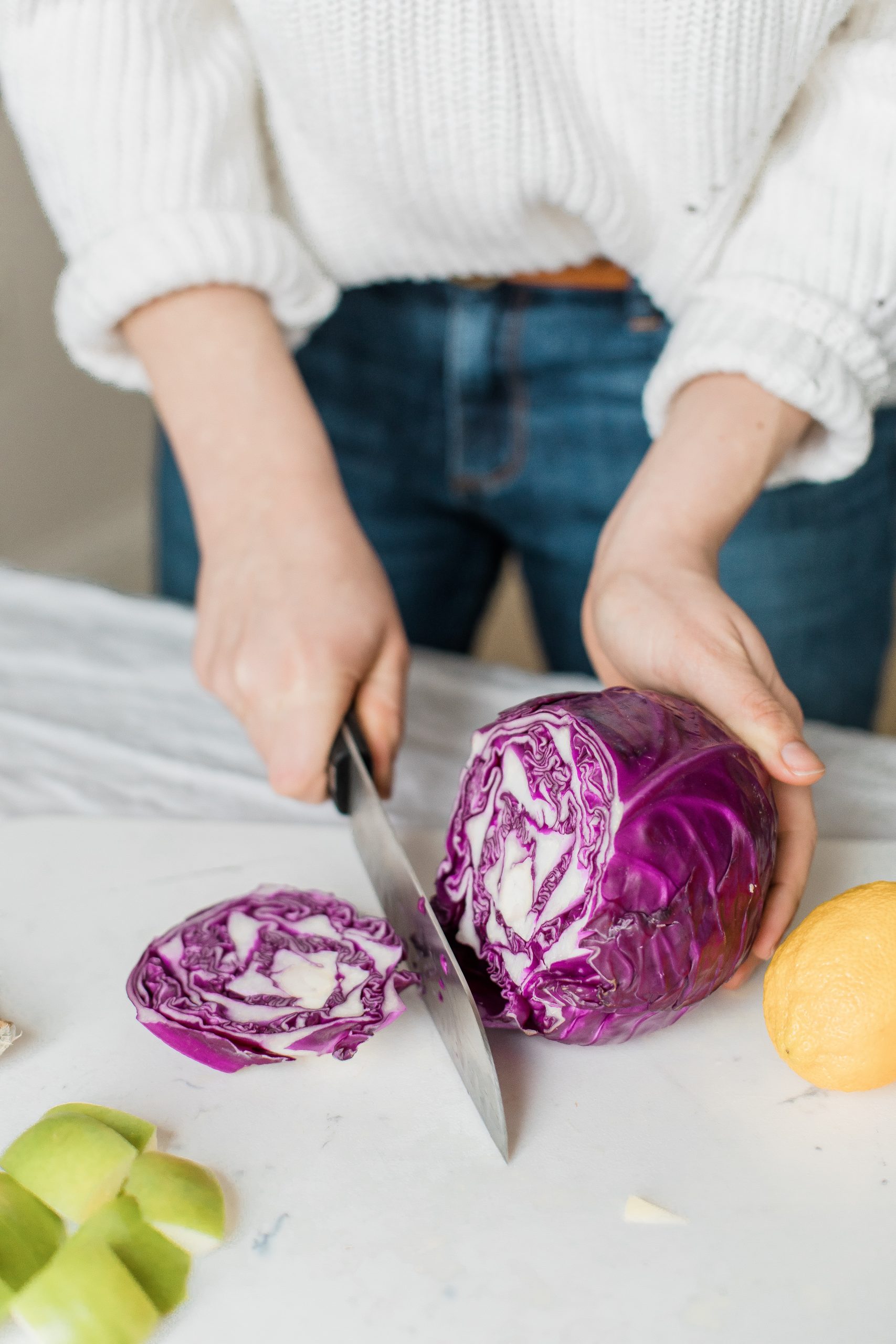
- Aim to have at least 1 bowel movement each day to facilitate the removal of excess estrogen in the body.
- Eat plenty of cruciferous vegetables to lower estrogen levels – try eating 1 cup of bok or pak choy, broccoli, cabbage, cauliflower, arugula and Brussel sprouts each day!
- Eat regularly – aim to eat every 2-3 hours to support blood sugar and hormone balance. Putting your body under too much stress can increase the stress hormone cortisol.
- Eat enough fibre to encourage regular bowel movements – aim to eat between 3-6 cups of colourful, leafy vegetables each day.
- Eat lean protein to support your detox pathways – try turkey, chicken, pork, beef, and seafood.
- Include plenty of healthy fats to support hormone creation – try extra-virgin olive oil, avocado, nuts and seeds.
- Stay hydrated by drinking plenty of water – aim for at least 8 cups per day.
- Try to avoid highly processed foods – think sugary foods, fast foods and refined oils.
- Avoid alcohol if you can! Alcohol is also removed via our liver, so give it a break if you can.
References:
- How Birth Control Pills Affect Your Nutritional Needs – Scientific American
- Oral contraceptives and changes in nutritional requirements – PubMed (nih.gov)
Looking for more support with your fertility? Book your free 30 minute 1:1 strategy call with me to learn how I can support you using functional nutrition, specialty lab testing, and targeted supplements. Can’t wait to speak to you!

What is PCOS?
PCOS or Polycystic ovary syndrome is a medical condition that impacts a woman’s hormone levels. Keep reading to learn everything you’ve wanted to know about PCOS.
Those with PCOS typically produce more of the male sex hormones which can lead to:
- Hormonal imbalances
- Skipped or irregular menstrual periods
- Difficulties falling pregnant
- Cysts on your ovaries
Polycystic ovarian syndrome can also cause a range of symptoms including:
- Excess hair growth (particularly on the face and body)
- Changes in body shape
- Acne
- Balding or excess hair loss
Different types of PCOS
There are four main types of PCOS that we commonly see.
1. Insulin resistant PCOS
This is the most common type of PCOS. We can determine that you have insulin resistant PCOS by looking at your circulating insulin levels.
2️. Pill-induced PCOS
Unfortunately, birth control can mask PCOS and may cause symptoms once we stop taking it. When we cease birth control, there is a flood of androgens which while temporary which can cause a range of symptoms associated with PCOS.
3️. Inflammatory PCOS
Chronic inflammation in our body can see our ovaries produce too much testosterone, which we know is a common issue in PCOS!
4. Adrenal PCOS
If our bodies respond to stress in an abnormal way, we can see adrenal PCOS as a result. It is not as common, only making up around 10% of all PCOS cases. This diagnosis will see high levels of DHEAS (an androgen produced in the adrenal glands) and normal levels of other androgens.
How PCOS is diagnosed
A PCOS diagnosis is typically made by your medical team if you have at least two out of these three symptoms:
- Elevated androgen levels
- An irregular menstrual cycle
- Cysts on your ovaries
Your doctor may also:
- Conduct a pelvic exam to check the health of your reproductive organs
- Do an ultrasound to look for abnormal follicles or cysts on your ovaries
- Take your blood to test your hormones and a variety of other health indicators
Helpful PCOS labs to request
In your quest to learn everything you’ve wanted to know about your PCOS, it’s important to consider labs! There are several helpful labs that you can ask your doctor to request if you suspect you have PCOS or if you want to gain a clearer picture of how well you are currently managing your PCOS.
There are several hormones which may be contributing to your PCOS and are responsible for your symptoms including:
- Testosterone
- Estrogen
- Progesterone
- LH
- FSH
- Prolactin
- DHEA
It’s also helpful to understand your blood sugar levels and whether insulin resistance is an issue for you. You can ask your doctor to check your:
- Fasting glucose
- HbA1c
- Fasting insulin
Inflammation can be common in those with PCOS and thankfully with dietary and lifestyle changes, we can reduce this if we know it is an issue. As your doctor to check your:
- CRP
- Homocysteine
Metformin (a commonly prescribed PCOS medication) can cause B12 deficiencies, so ensure that you doctor screens for this in your bloods also!
How does PCOS impact your cycle?
There are two main ways in which PCOS impacts upon your menstrual cycle.
- Women with PCOS typically don’t ovulate or ovulate infrequently. This prevents the uterine lining from shedding each month like we would typically expect. As a result, this can cause irregular menstrual cycles.
- As a result of the above, the uterine lining doesn’t shed as often, becomes thicker and can cause heavier bleeding than normal when you do get a menstrual bleed.
What does PCOS mean in terms of fertility?
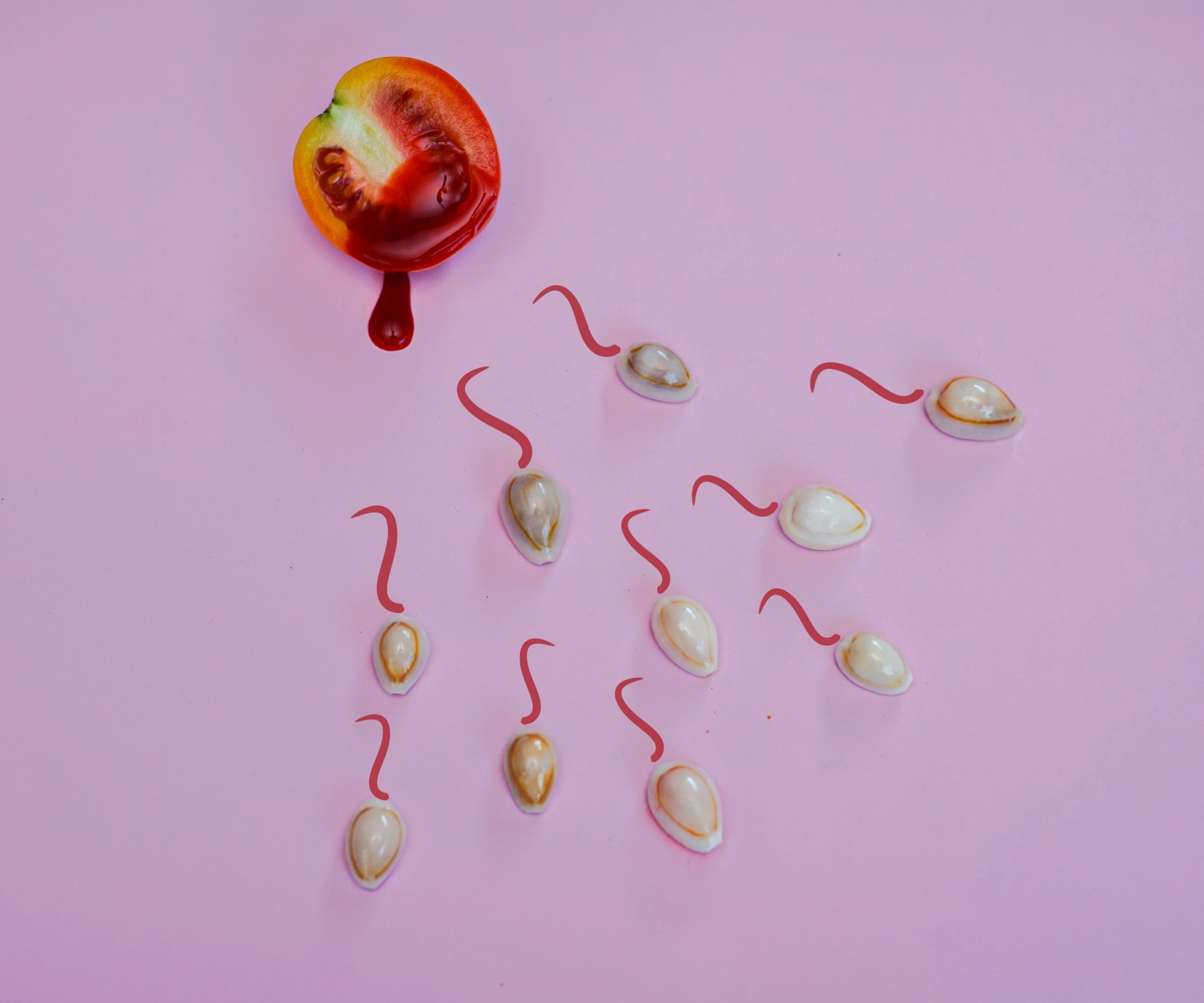
Given that PCOS disrupts your ability to have a normal menstrual cycle, it can also potentially impact upon your ability to get pregnant. It is estimated that between 70-80% of women diagnosed with PCOS struggle with infertility at some point.
The changes in hormone levels can also increase your risk of complications arising during your pregnancy including:
- Premature birth
- Miscarriage
- Gestational diabetes
- Pre-eclampsia
Thankfully dietary and lifestyle changes considerably improve your chances of conception and having a healthy pregnancy and healthy baby!
Things that can make your PCOS worse
- Working long hours and not taking regular breaks
- Inadequate water intake
- Inadequate daily movement or exercise
- Not eating enough fibre
- Poor sleep duration and quality
- Drinking too many caffeinated beverages
- Not eating enough healthy fats in your diet
- Not eating regularly – skipping meals and snacks can wreak havoc on your blood sugar and insulin levels
- Exposure to endocrine disrupting chemicals
- Not eating balanced meals
- Consuming too many processed foods
How best to support your PCOS
The good news is that there are many aspects of your lifestyle that can be altered that can significantly improve the free androgen index (FAI), in addition to your weight and BMI.
Aim to balance your blood sugar levels and manage your insulin resistance
- Consuming low-glycaemic index foods (see guide here for more info)
- Eat regularly (every 3-4 hours)
- Consume balanced meals (incorporate protein, healthy fats and fibre-filled carbohydrates into each meal and snack)

Consider supplements
- Talk to your healthcare profession about how dietary supplements may be able to assist in the management of your PCOS (see more on supplements for PCOS below)
Manage your stress
- Adopt strategies to better manage your stress
- Try moving your body, meditating, and journaling

Drink enough water
- Aim for at least 8 glasses of water each day
Get plenty of sleep
- Aim for 7-8 hours sleep each night
Avoid endocrine disrupting chemicals
- Avoid BPA, phthalates, dioxins, copper and chromium are just some of the many endocrine disrupting chemicals we are exposed to each day.
Endocrine disrupting chemicals are found in:
- food
- personal care products
- cosmetics
- pharmaceuticals
- pesticides
- plastics
- water
- soil
Learn more about endocrine disruptors here.
Some commonly used supplements include:
Magnesium
The research on magnesium supplementation is not concrete at present. Some studies suggest that magnesium may play a role in improving insulin resistance due to its links to glucose metabolism.
Inositol
Inositol is often combined with metformin and can help to enhance:
- Insulin function and manage insulin resistance
- Move glucose into our cells faster helping to keep our blood sugar levels more stable
Berberine
Berberine is known for having several functions including:
- Helping to reduce inflammation
- Increase insulin sensitivity
- Encouraging ovulation each cycle (in turn improving fertility)
N-Acetyl Cysteine (NAC)
NAC is an antioxidant compound which reduces the number of free radicals that can damage cells in our body.
NAC is associated with:
- Improved chances of conceiving
- More regular ovulation
Enjoyed learning everything you’ve wanted to know about PCOS and keen to learn more?
References:
- Treatment of infertility in women with polycystic ovary syndrome: approach to clinical practice (nih.gov)
- Pregnancy complications in women with polycystic ovary syndrome | Human Reproduction Update | Oxford Academic (oup.com)
- Polycystic Ovary Syndrome (PCOS): Symptoms, Causes, and Treatment (healthline.com)
5 easy ways to reduce stress while trying to conceive
Embarking on a fertility journey can feel long and overwhelming at times. It is important to have strategies in place to help you cope with stress and anxiety, particularly if you are a Type-A personality that likes everything to be perfect at all times! These 5 tips will help you to reduce your stress while you are trying to conceive.
Try as best as you can to take things back-to-basics, by taking perfectionism off the table. Focusing on the basic pillars of health and wellness, can reduce stress without adding additional overwhelming tasks to your already very long to-do list.
If our stress levels remain high for too long, we can end up with elevated levels of cortisol, a hormone that is made up of the same building blocks as progesterone.
If our body is busy focusing on making cortisol, it places less importance on progesterone production, leading to a reduced supply. This can lead to several negative side-effects, particularly in respect to fertility including:
- Estrogen dominance
- Decreased ability to conceive
- Difficulty with mood stabilization
Progesterone helps us to grow a thick uterine lining which is then shed during menstruation. If we don’t have enough progesterone, then we end up with a lighter period, and a thinner uterine lining to support healthy implantation.
So we can see just how big of an impact stress can have on our ability to conceive!
Try these 5 easy ways to reduce your stress while you are trying to conceive:
-
Ensure you get regular movement
Be sure to move your body daily, even if it is in a very gentle way. Research has shown time and time again, that exercise is incredibly beneficial for stress and our mental health as a whole. Try activities like yoga, walking, and tai-chi to get your blood flowing.
2. Get enough sleep
Take this time to create a relaxing night time routine to help you unwind and get adequate sleep. Try taking time off devices to read, listening to a podcast, trying a mindfulness exercise or talking to a loved one. Aiming for 7 to 8 hours of sleep each night will help your body to get the rest it needs, without adding additional stress hormones into the mix.
3. Connect with others
Remind yourself of the supportive community that you have around you on this journey. Reach out to friends, family, support services at your fertility clinic or a counselling service if you need to. Research has shown that good social supports have a number of protective effects on our health (all of which are beneficial for improving our chances of conceiving) including:
- Decreased blood pressure
- Normal heart rate
- Reduced cortisol levels
4. Keep busy!
Type-A people are prone to overthinking and dwelling on the negative. Staying busy during your fertility journey can help you to stay positive and not focus on the things that we can’t control.
Take up a new hobby, clean out that cupboard, cook a new recipe or plan a day trip to somewhere you haven’t been before! Keep your mind and hands busy as often as you can to help reduce your stress.
5. Reframe your thoughts
Reminding yourself of the strength it has taken you to get to this point can be helpful for Type-A personalities. Try to avoid dwelling on negatives and focus on the facts. Spending time in a negative space will only make the process feel harder. Writing down your thoughts and linking them with facts can be a helpful visual and can help you to break negative thought processes.
For example, if you regularly think “I’m not meant to be a mother, this will never happen for me”, counteract this thought with several facts for example:
- I have several caring and motherly instincts and that is clearly seen in how I care for my partner and friends
- This may not happen right now, but that does not mean it will never happen
If you try these tips and are still struggling to find enough support while you are trying to conceive, book your free 30 minute 1:1 strategy call with me to learn how I can support you using functional nutrition, specialty lab testing, and targeted supplements. Can’t wait to speak to you!

References:
Harnessing the Power of 5R’s for Optimal Gut Health
If you’ve read my other posts about how gut health is so important for fertility, then you’re probably wondering how you can approach the process of healing. Enter: the 5R Framework for Gut Healing.

*While I recommend working with a health practitioner to help guide you through this process, I thought I’d break down a very popular approach to healing the gut. Please know that an individualized approach is best when trying to heal digestive issues.
Why address gut health first?
Dysfunction of one’s GI system can have a downward spiral effect on overall health. From a functional lens we recognize the interconnectedness between:
- Digestion / Absorption
- GI Flora- balance vs dysbiosis
- Immune regulation and inflammation
- Gut brain axis
- Enteric nervous system
- Intestinal Permeability
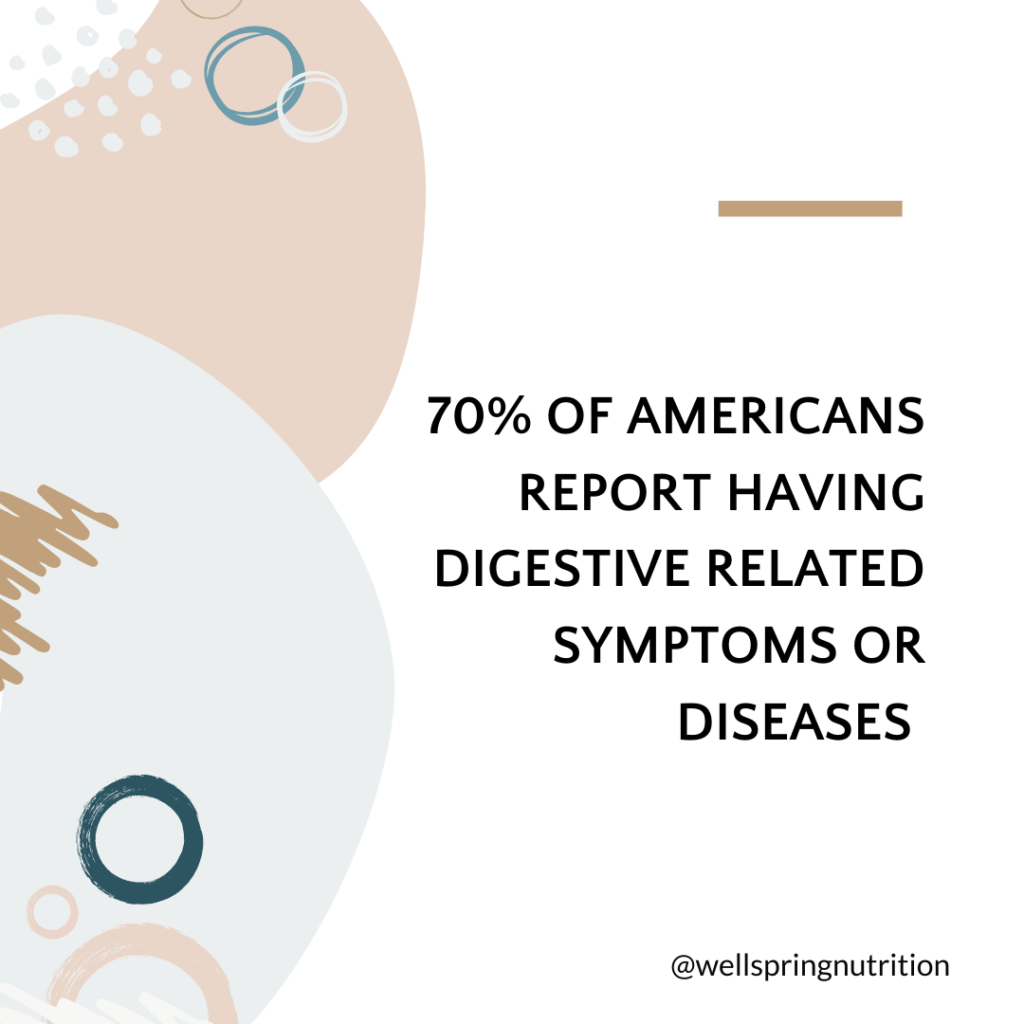
Going beyond just poor digestion, the gut brings the whole body in balance. The gut is the body’s second brain and is ground zero for our immune system.
The GI track makes 75% of neurotransmitters, contains ⅔ of immune tissues, contains 10x more cells than rest of body combined, houses genome 100x larger than human genome, and has a metabolic activity greater than the liver.
So, where do we begin?
Of course, with the diet. Our gut health depends on eating a nutrient-dense diet, full of fiber, and diversity (think about getting 30 different plant sources of food per week!)
You can’t expect to feel like a million bucks if you’re eating from the dollar menu.
Eating a Standard American Diet (SAD) puts you at higher risk for a leaky gut (intestinal permeability) and dysbiosis. If you’re eating junk, you probably feel like junk, just sayin.
Other things that impact gut health are antibiotics, infection, genetics, sleeping habits, environmental toxins, stress, and exercise.
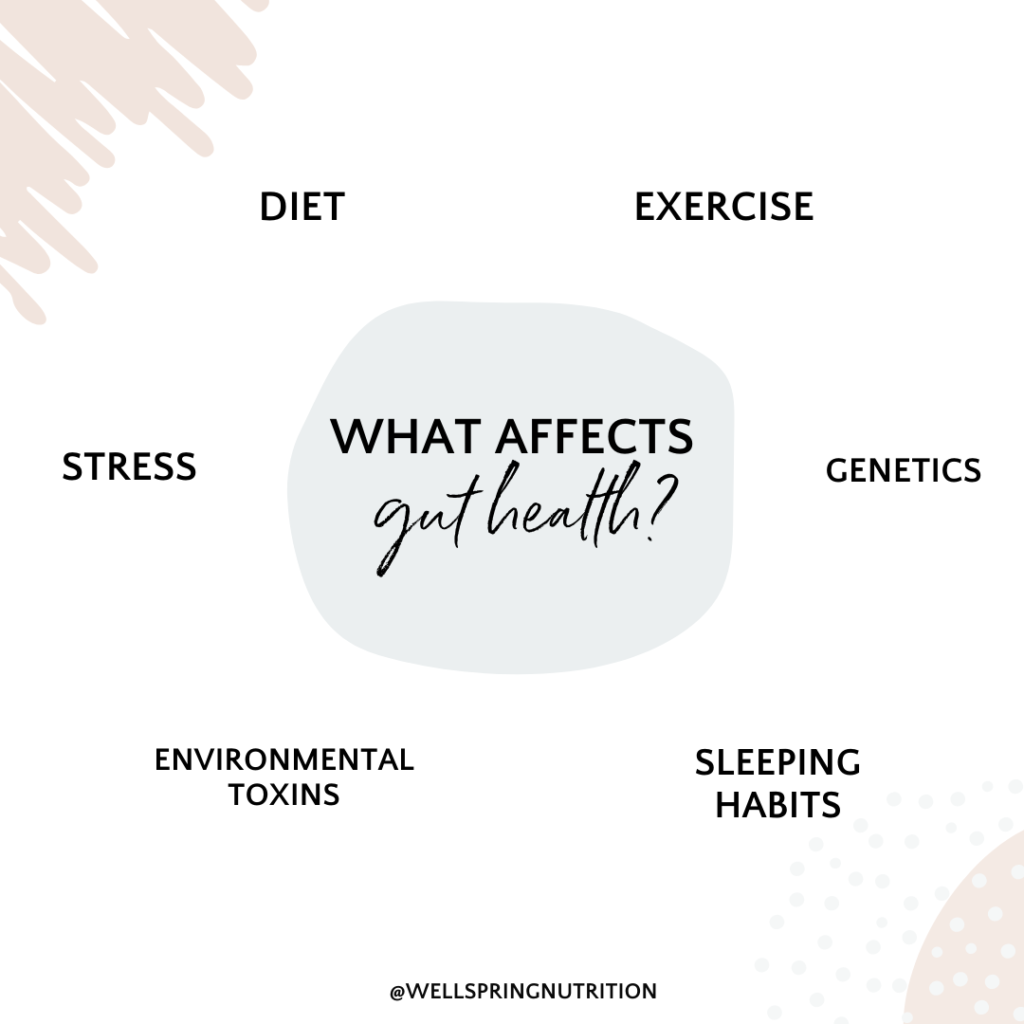
Our gut microbiota are responsible for may things, including:
- Digestion of lactose and proteins
- Balance intestinal pH
- Benefits to bowel habits – microbiota can help IBS symptoms, alleviate diarrhea, and peristalsis
- Reduce intestinal inflammation and are immune strengthening. (Good bacteria can prevent infections.)
- Essential Fatty Acid and Short-Chain Fatty Acid production
- Conversion of flavonoids
- Protecting against pathogens (food infections, and can decrease severity of an infection)
- Break down toxins and protect against toxic burden
- Protect and modulate autoimmune diseases
The 5R Framework for Gut Health:

- Process to help reduce inflammation and help to heal the gut
- Targeted, individualized intervention
- Process to normalize critical gastrointestinal functions
Remove
REMOVE:
- Foods to which an individual is sensitive, intolerant or allergic (elimination diet, food journal, and detailed history — food is information!)
- Poor quality, processed foods
- Pathogenic microflora (bacteria, fungi, parasites)
- Toxins, chemicals, environmental stressors such as pollutants
- Chronic stress
This step is really not about losing weight, calorie restriction, or removing food groups just for the sake of it. This is about identifying food sensitivities and triggers, honoring your body’s hunger cues, and really about the QUALITY of fuel you’re eating.
Replace
- Providing support for proper gastric acidity
- Betaine HCL tablets taken with protein meals (if you have low stomach acid)
- Digestive enzymes with acid pH range
- Digestive bitters
- Apple cider vinegar
- Lifestyle factors — reduce stress, increase exercise, sleep
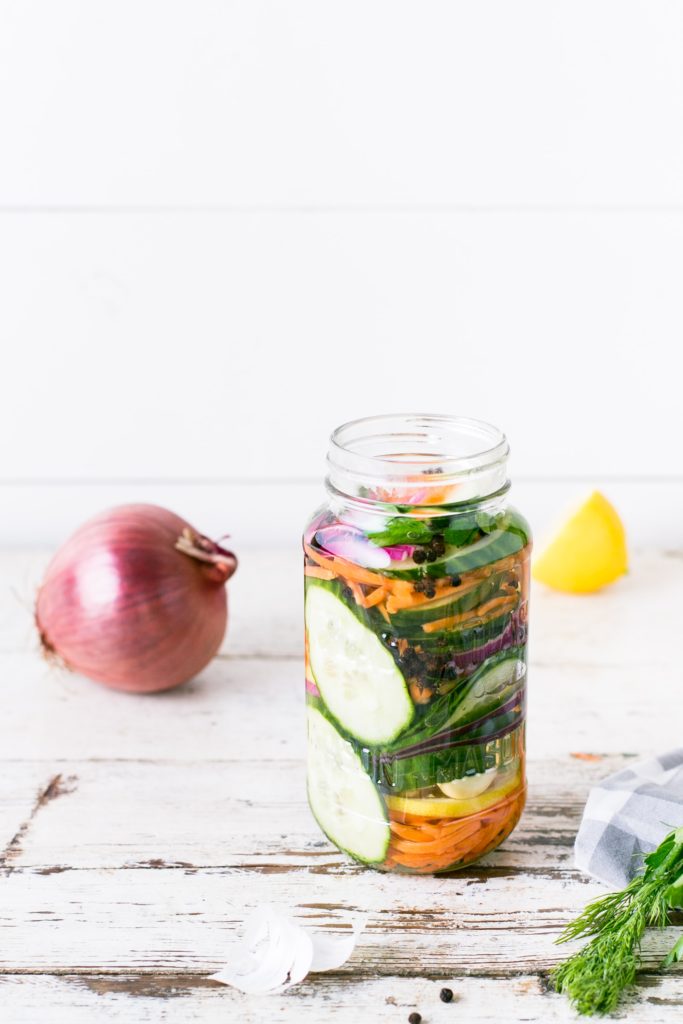
Re-Inoculate
This stage is about a supportive reintroduction of beneficial GI microflora (pre-biotics, probiotics, etc.) to achieve a more desirable balance to intestinal microbiome.
Some people may find out that they have too much of one type of bacteria, and not enough of another. Doing a GI MAP functional gut health test is an excellent way of identifying this.
Also, include more fermented and cultured foods into the diet to add more beneficial bacteria.
Repair
This step is all about providing nutritional support for healing and regeneration of the GI mucosa. Some things to consider would be:
- Glutathione
- Vitamins A, D, C and E
- Zinc
- Slippery elm or marshmallow root for mucosal support
- Immunoglobulins for GALT function (gut-associated lymphoid tissue)
- Phytonutrients and anti-inflammatories like curcumin, EPA and DHA
Rebalance
The last step is all about rebalancing- this means anything from scheduling relaxation time, to eating more mindfully and reducing stress.
Other helpful techniques include yoga, meditation, breath-work or psychotherapy. In fact, a recent study showed that when looking at hypnotherapy compared to the low FODMAP diet, they both had similar results for people with IBS.
Similarly, a study looking at 12 weeks of the low FODMAP diet vs. 12 weeks of gut-directed yoga therapy found that the yoga flow had similar outcomes as the low FODMAP diet, which is considered the gold standard diet for people with IBS.
This research is still new and emerging, but stress no doubt plays a huge role in gut health.
If you’re interested in learning more about functional gut health testing, or how I work with my fertility clients on gut health – feel free to book a free 30 minute call with me to see how I may be able to help you on your journey.
Please Note: The information on this website is provided for educational purposes only and should not be construed as medical advice. Please consult with your healthcare practitioners before undertaking any changes in your diet or adding supplements.
References
Intestinal Microbiome in Irritable Bowel Syndrome before and after Gut-Directed Hypnotherapy. (2018) https://www.ncbi.nlm.nih.gov/pubmed/30453528
Hypnotherapy Provides IBS Relief (2019) https://jamanetwork.com/journals/jama/article-abstract/2722766
Randomised clinical trial: yoga vs a low-FODMAP diet in patients with irritable bowel syndrome (2018) https://www.ncbi.nlm.nih.gov/pubmed/29076171
What is the GI-MAP test?
If you’ve ever heard that the gut is like the second brain, then you probably know that our gut health impacts our overall health, especially for fertility. Research has found that the gut microbiome impacts our digestion, immunity, metabolic and neuroendocrine functions, sleep, stress and so much more.
The GI MAP is a functional lab test that does a comprehensive analysis of your gut health. It looks at parasites, bacteria, fungi, inflammation markers, digestive enzymes and much more, and does so by targeting specific DNA of the organisms it tests.
The test looks at the DNA of pathogenic organisms like bacteria and viruses, but also the beneficial organisms (ie good bacteria) and the opportunistic bacteria as well.
The test looks at the specific genomes of these organisms that reside in the intestinal ecology. It’s a “Quantitate DNA test” – or real time test – which differentiates this test from other tests on the market.
The GI-MAP will actually measure how much of each strain exists in the gut, rather than just looking at a percentage.
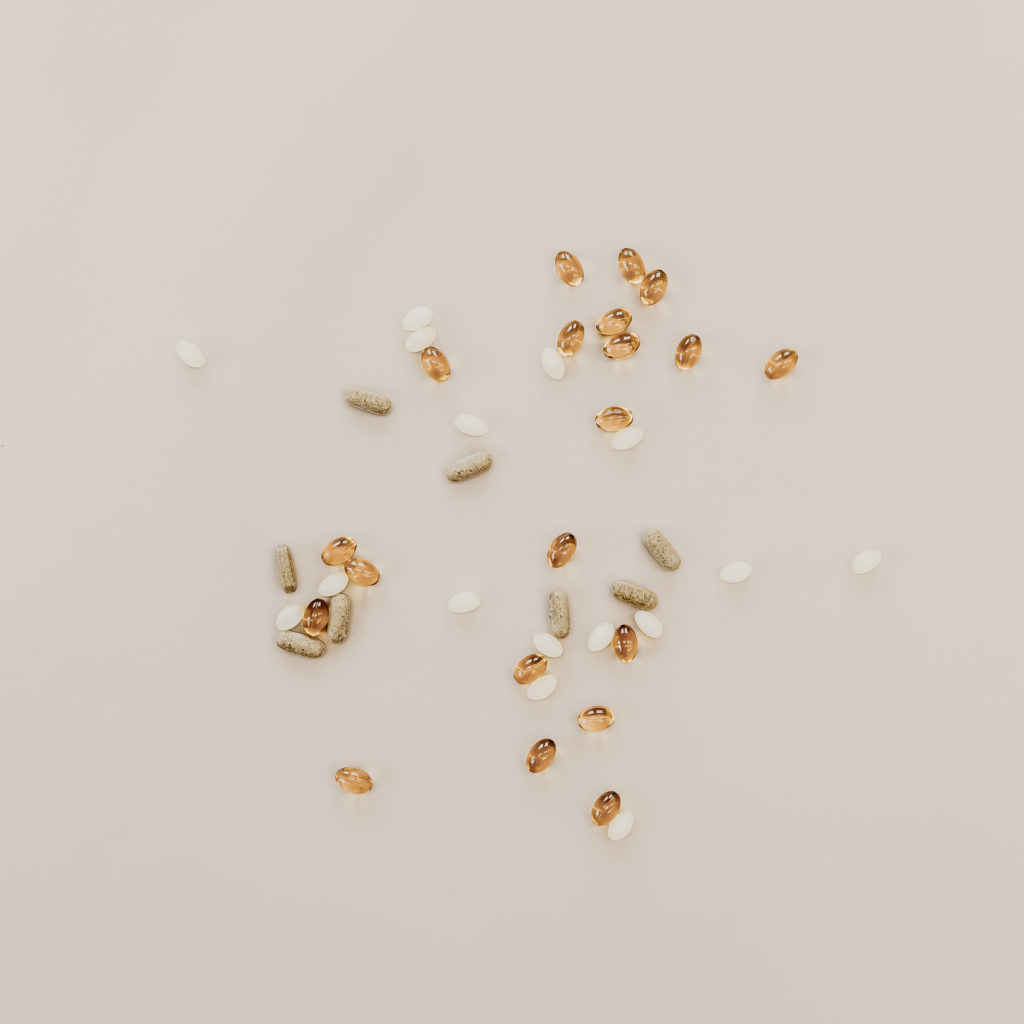
Some Functional Markers in the GI MAP Test:
- Calprotectin– a measure of inflammation in the gut. Can be a sign of Crohn’s disease or IBD.
- Pancreatic elastase– the level of enzyme activity- how good are your levels of enzymes that digest protein, fat, carbs and fiber.
- Secretory IgA– a marker of the ‘reactivity’ of your gut immune layer. It represents the first line of immune defense of the gut. This is important when evaluating food intolerances
- Zonulin– a marker of leaky gut (intestinal permeability)
- B-glucoronidase- a measure of re-circulating toxins between the gut and the liver. You’ll see this marker elevated with excess estrogen and in people with poor liver detoxification.
- Steatocrit- amount of fat in the stool- measures fat absorption
- Gliadin IgA– an excellent measure of gluten intolerance

Why Not Order a Cheaper Gut Health Test?
Many of the consumer facing microbiome tests don’t actually give you a full picture of what’s happening in the gut – they don’t count bacteria or parasites present.
In fact, I’ve taken one of those tests in the past and just felt like I didn’t have any more answers to my questions.
The GI MAP is used by clinicians and provides the most comprehensive analysis of the gut microbiome compared to any other gut health test on the market. If you’re looking for real answers – test, don’t guess.
Why You Might Need a GI-MAP Stool Test for Gut Health and Fertility
Some conditions that could benefit from taking a GI Map stool test would be someone with:
- Autoimmune disease
- IBS/IBD
- Digestive complaints like diarrhea or constipation
- Brain fog, fatigue
- Joint pain
- Skin problems, like acne, rashes, hives or psoarisis
- Mood disorders, depression, anxiety
- Diabetes and weight loss issues
- Food intolerances
Why is Gut Health Important for Fertility?
I’ll be spending the next few weeks talking about how gut health impacts fertility, but there are a few high level concepts when it comes to the connection between fertility and gut health:
1. Hormone Balance- your gut directly plays a role in balancing the levels of estrogen in your body. If you suspect you have estrogen dominance, taking a comprehensive stool test would be a good place to start investigating.
2. Inflammation- your gut can cause some serious inflammation in the rest of your body. I love that the GI MAP can test for Zonulin, which is a marker of intestinal permeability or “leaky gut.” When toxins from the GI tract can leak into the bloodstream, this causes an immune response by the body, and triggers inflammation. When we work on fertility issues, the broad goal is to reduce overall inflammation so the body can prioritize reproductive health.
3. Insulin Resistance – A 2012 study found that dysbiosis and intestinal permeability impacted insulin levels, which then affected egg and sperm development.
The researchers also found that leaky gut and inflammation was a common cause of PCOS, and that insulin disruption was the most common cause for menstrual disruption and problems with ovulation.
How to Order the GI MAP Test
The test needs to be ordered by a qualified practitioner, such as myself. Interpreting the results requires understanding of gut bacteria, functional gastrointestinal health and experience dealing with dysbiosis or microbiome imbalances.
Interested to learn more? Book a free discovery call with me here to learn how we can use functional lab testing to address fertility.
If you suspect leaky gut or experiencing some of the symptoms listed above, we can discuss some options for you and work on your nutrition and lifestyle together to improve your microbiome.
Want more support?
1:1 Coaching: Let’s hop on a call to discuss what working together could look like & determine if we are a good fit
Grab my free Fertility Nutrient Guide and get added to our mailing list to get information like this sent to your inbox directly!
References
- Tremellen, K and Pearce, K (2012). Dysbiosis of Gut Microbiota (DOGMA) – A novel theory for the development of Polycystic Ovarian Syndrome Med Hyspotheses’ 79, 1, 104-12.
You may be thinking – I don’t need to work with a fertility dietitian / nutritionist, I already eat pretty healthy (weekend margs don’t count right?), I exercise, drink my green juices … and besides, I can get any nutrition information I really need through Google.
Well, my friend… I’m here to break down five benefits of working with a fertility dietitian nutritionist, specifically one that works in a functional nutrition capacity. I think some of these may surprise you!

1. Breaking down your relationship with food
Okay, we all have our issues with food. To say that eating is not emotional… well it’s just not what I’ve seen in my practice and in life. We all eat emotionally from time to time, even if it’s happy emotions like birthday cake, or holiday meals.
But when our relationship to food becomes restrictive or consumes our thoughts, it’s time to work with a professional who understands what you’re going through.
For many women struggling with fertility, food can be very time consuming. We’re told not to eat gluten or dairy or cut out coffee completely. We’ve heard of different fertility diets, and can easily spiral into the trap of thinking that every bite we take is going to either get us pregnant or leave us feeling miserable.
Working with a fertility dietitian that can help you set up your meals in a way that supports your fertility, but also leaves room for enjoyment is key. I mean, what is a life without pizza anyway?
2. Accountability

Raise your hand if you’ve ever tried to take on a new hobby or something to improve yourself only to find yourself giving up a few weeks later? 👋🏼
A few years ago, I decided I wanted to take up surfing – I bought a foam board off Craigslist, rented a wet suit, and out I went into the ocean. As I splashed around the water, and even got tumbled by some waves I felt exhilarated by the cold Pacific ocean and glimmer of water in the sun.
Maybe I went out a few more times, but soon enough, I lost momentum. I didn’t have anyone to go with, no one to learn some new moves with or a partner to go with before or after work.
We all have the best of intentions when we start something new. But having accountability is key. And your dietitian is always going to keep you accountable to what you said you wanted for yourself.
3. Test, don’t guess
When you work with a functional nutrition dietitian (hey, hello!) – you’re likely going to be introduced to some new functional lab tests. Tests like the DUTCH hormone test, GI MAP stool test, Spectracell micronutrient testing, food sensitivity testing and more.

The reason for this is because you’ve likely already had some conventional lab tests done in the past. The problem with this is that you’re still trying to get pregnant and have no answers. By the way… “unexplained infertility” is not an answer.
This is where a deeper dive into your gut, hormones, and nutrient levels is so important. For example, most people don’t realize that they’re probably deficient in vitamin D – a key vitamin (that acts as a hormone) needed for fertility.
Or maybe you’ve had heavy periods your whole life, but didn’t realize that your messed up gut health is actually impacting your estrogen levels, causing you to put on weight, and have heavy painful periods.
Working with a functional nutrition dietitian is going to be key to understanding the root cause of your issues.
4. You have PCOS and you’re kind of freaking out
One of the most common hormone disrupting conditions for women of reproductive age is PCOS. It can feel really scary when you get the diagnosis and you may think you’ll never be able to get pregnant without hormone therapy – WRONG. Just wrong.
Instead of jumping to medications and pills, you can work with a fertility dietitian who will help you manage your diet and lifestyle specifically for PCOS, so that you can have regular periods, and optimize your chances of getting pregnant naturally.
PCOS is not a death sentence, and there are plenty of women with the condition who get pregnant (and have healthy pregnancies) without assistive reproductive technology.

5. You know your diet could be better and you just want to make sure you have a healthy pregnancy
Well, good on you girl for being uber prepared for pregnancy.
Did you know that the best time to start taking prenatal vitamins and working on your diet is actually 6 months BEFORE you plan to start trying?
Working with a fertility dietitian is going to be huge for you, because you’re making sure you get all the nutrients you and baby need, so by the time that first trimester rolls in and all you want is bagels and crackers- you’ve already stored up the necessary nutrients to ensure baby is getting everything they need.

So tell me, which one applies to you? If you’re thinking you might benefit from working with a fertility dietitian, book your free discovery call with me today.
We’ll talk through what your goals are and how I might be able to help you on your journey towards becoming a mama.

The Preconception Playbook
This free playbook provides specific actionable tips to get started on your fertility journey, as well as what to avoid while you're trying to conceive.
Get the free playbook

